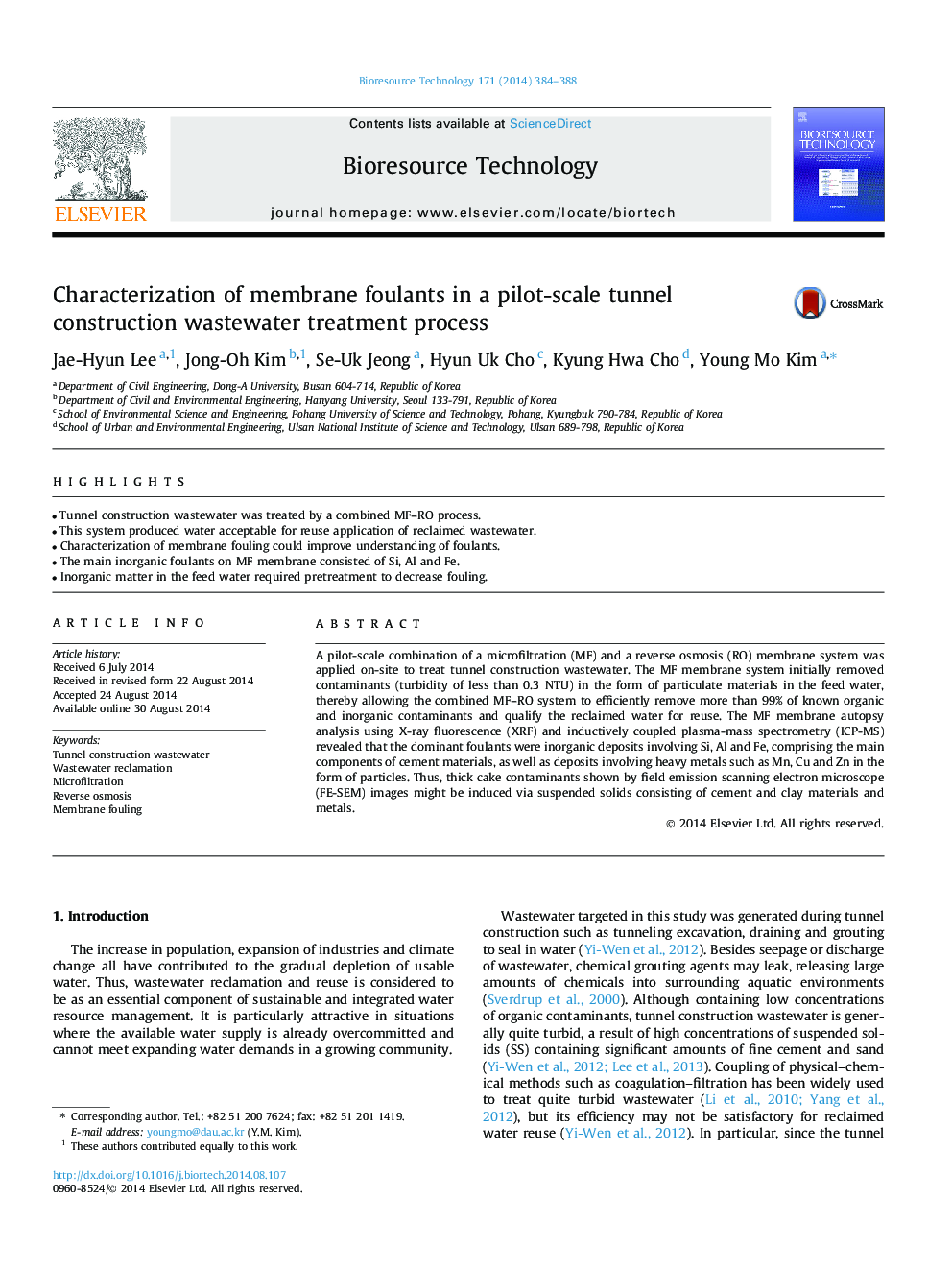| Article ID | Journal | Published Year | Pages | File Type |
|---|---|---|---|---|
| 680368 | Bioresource Technology | 2014 | 5 Pages |
•Tunnel construction wastewater was treated by a combined MF–RO process.•This system produced water acceptable for reuse application of reclaimed wastewater.•Characterization of membrane fouling could improve understanding of foulants.•The main inorganic foulants on MF membrane consisted of Si, Al and Fe.•Inorganic matter in the feed water required pretreatment to decrease fouling.
A pilot-scale combination of a microfiltration (MF) and a reverse osmosis (RO) membrane system was applied on-site to treat tunnel construction wastewater. The MF membrane system initially removed contaminants (turbidity of less than 0.3 NTU) in the form of particulate materials in the feed water, thereby allowing the combined MF–RO system to efficiently remove more than 99% of known organic and inorganic contaminants and qualify the reclaimed water for reuse. The MF membrane autopsy analysis using X-ray fluorescence (XRF) and inductively coupled plasma-mass spectrometry (ICP-MS) revealed that the dominant foulants were inorganic deposits involving Si, Al and Fe, comprising the main components of cement materials, as well as deposits involving heavy metals such as Mn, Cu and Zn in the form of particles. Thus, thick cake contaminants shown by field emission scanning electron microscope (FE-SEM) images might be induced via suspended solids consisting of cement and clay materials and metals.
